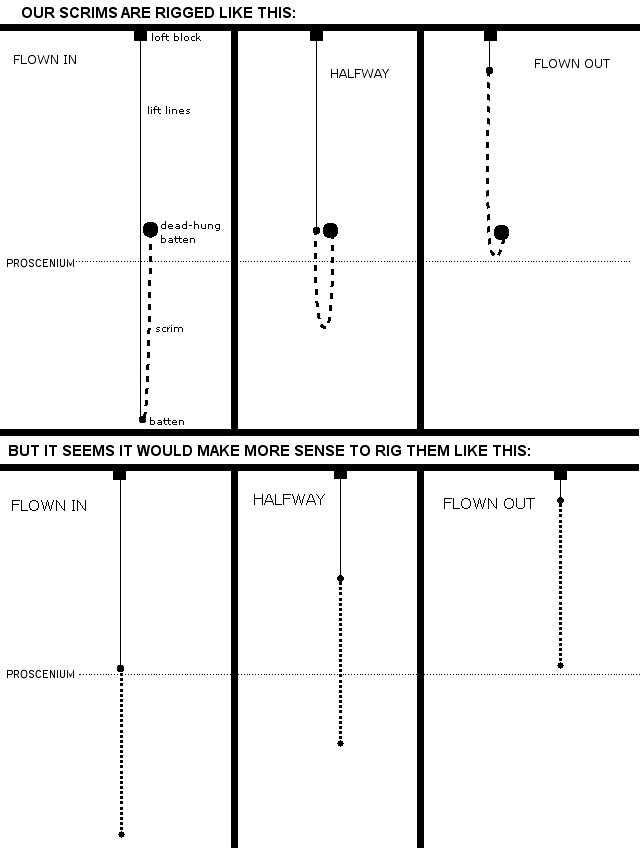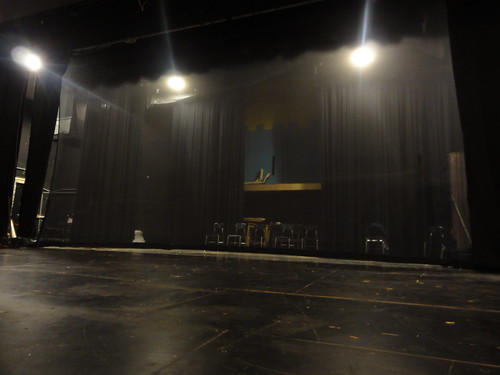This coming school year, one of the things I'm doing is going through our rigging system, and removing old spot lines, unrated and underrated components, and generally optimizing for safety and efficiency.
One thing that has me puzzled is the scrim rigging. I have never seen a proper scrim rig, and have been unable to find pictures of one on the internet.
Our scrim has one end attached to a dead-hung batten (which, oddly enough, is actually riveted to supports coming out of the proscenium wall), and has the other end attached to a moving batten. When flown in all the way, the batten has to come down to the deck, and when flown out, it has to come all the way to the ceiling.
It seems to me that the right way to rig it would be to attach it to a moving batten, and simply weight the bottom end. Then the batten only has to travel half the height of the fly tower.
I drew this up, I think it explains it better than I can write:

I know, it's one of those "if you have to ask, you shouldn't be doing it" things, but I really see no other way to find out how to do it right!
One thing that has me puzzled is the scrim rigging. I have never seen a proper scrim rig, and have been unable to find pictures of one on the internet.
Our scrim has one end attached to a dead-hung batten (which, oddly enough, is actually riveted to supports coming out of the proscenium wall), and has the other end attached to a moving batten. When flown in all the way, the batten has to come down to the deck, and when flown out, it has to come all the way to the ceiling.
It seems to me that the right way to rig it would be to attach it to a moving batten, and simply weight the bottom end. Then the batten only has to travel half the height of the fly tower.
I drew this up, I think it explains it better than I can write:

I know, it's one of those "if you have to ask, you shouldn't be doing it" things, but I really see no other way to find out how to do it right!



 , in the first illustration is a "tripped
, in the first illustration is a "tripped 